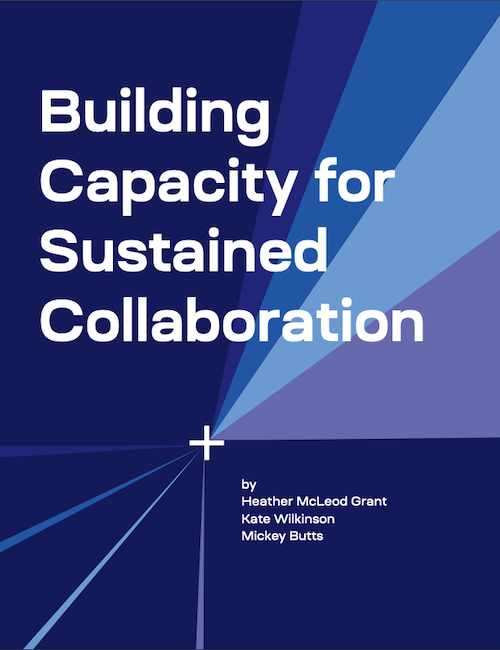
The social sector is facing a perfect storm. Demand for community services keeps rising, government funding is declining, more philanthropy is concentrated in fewer hands, and smaller donors are giving less. And this was true before the COVID-19 pandemic and economic recession hit. An already dire situation has now been exacerbated, featuring skyrocketing demand for services coupled with falling nonprofit revenue—and leaving many organizations facing an uncertain future. As a result, there has never been a greater need for “sustained collaboration” in our sector.
Luckily, a number of foundations have pioneered a new model of pooled funding that can serve as one approach to help many nonprofits get through this crisis. Over the past decade, more than 100 foundations in seven communities have committed $20 million in capital and created initiatives to help nonprofits pursue “a continuum of organizational strategies for structured collaboration that represent a long-term and permanent change to their business or operating models.” These strategies can take the form of mergers, joint ventures, partnerships, and other arrangements. Six of these initiatives have launched the national Sustained Collaboration Network (SCN) to develop best practices and share frameworks and tools that will benefit others considering similar efforts, especially in light of the recent crisis.
We’ve had the privilege of working with SeaChange Capital Partners and this network to prepare for this launch—which couldn’t be timelier. In our related report, Building Capacity for Sustained Collaboration, we share stories from communities that have experimented with pooled funding models for sustained collaboration, case studies of local initiatives in Los Angeles and New York, and a list of emerging practices for other communities and funders seeking to emulate this approach. The time is ripe for funders and nonprofits to begin thinking beyond the immediate crisis and contemplate the structural reform needed to create a more sustainable, resilient sector that can maximize impact. We hope this report will help inform that important conversation.